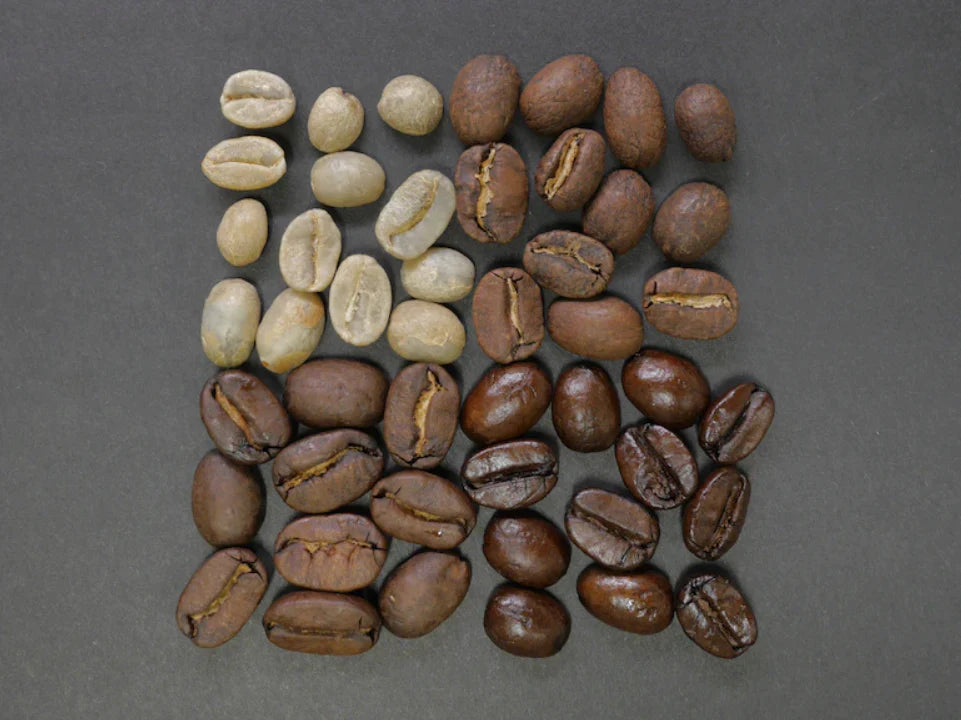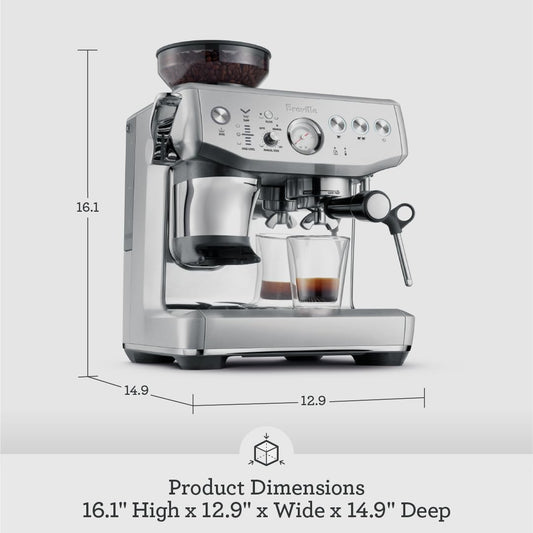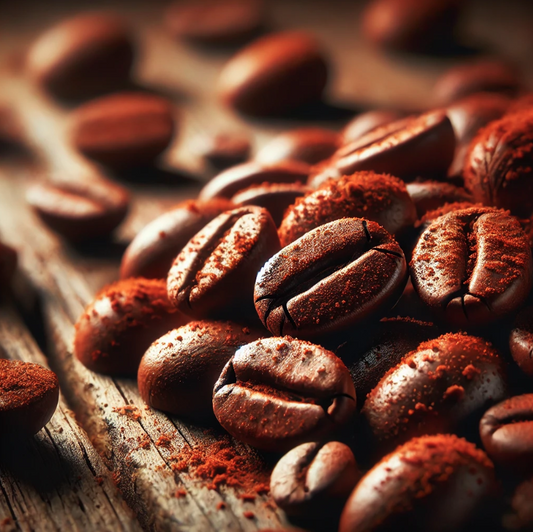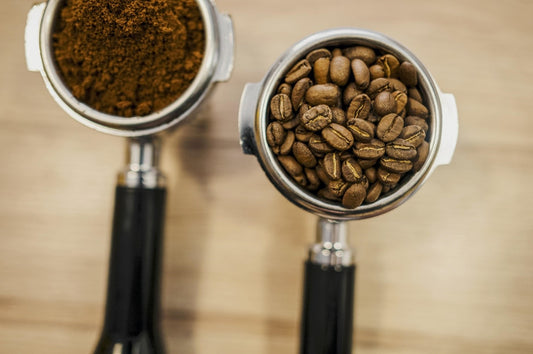When it comes to coffee, there are two main types of roast - light, and dark. The kind of roast you choose will have an impact on the taste of your coffee, as well as the caffeine content.
So here in this article, we will discuss the difference between light and dark roast coffee and determine which one is better for you.
Coffee roasting basics

To understand the light vs dark roast coffee debate, it's essential to know a bit about the roasting machine process.
Coffee beans are the seeds of coffee plants. These coffee beans are green when harvested and need to be roasted to develop the rich flavor that we know and love.
The roasting process involves using higher temperatures for cooking the beans. Roasting the coffee beans determines the final color, flavor, and coffee aroma. The longer the beans are roasted, the darker they will become.
During the roast-level process, the coffee beans will go through several stages. The first stage is called the "first crack." It is when the coffee beans make a cracking sound and start to expand.
The second stage is called the "second crack." It is when the coffee beans expand even further and start developing a darker color.
At the end of the roasting process, the coffee beans are removed from the heat source and are allowed to cool down.
The roasting process causes the beans to expand while also changing their color to the dark brown we are used to seeing. The longer the beans are roasted, the darker they will become.
Let's talk about flavor.

The roasting process is what gives coffee beans their flavor. The longer the bean is roasted, the darker it becomes, and the bold and more intense the flavor will be.
Light roast coffees will have a more lightweight body and are more acidic. The flavor will be more delicate and nuanced.
On the other hand, dark roasted coffee will have a heavier body and be less acidic. The flavor notes will be bolder and more intense.
Which roasts have high caffeine content?

Now, let's talk about caffeine. Contrary to popular belief, dark roast coffee beans have slightly less caffeine than light roasted coffee beans.
Caffeine is lost during the roasting process. So the longer the bean is roasted, the less caffeine it will have.
That being said, the difference in caffeine content between light and dark roast coffees is not that significant. But if you're looking for a caffeine boost, you're better off choosing a light roast over a dark roast.
Which one is healthy?

In terms of health benefits, there is no clear winner. Both light and dark roast coffee beans have their own unique health benefits.
For example, light-roast coffee beans have higher levels of antioxidants. Antioxidants are essential for protecting our cells from damage and preventing chronic diseases.
On the other hand, dark roast coffee beans have higher levels of polyphenols. Polyphenols are compounds linked to various health benefits, such as reduced inflammation, improved blood sugar control, and reduced risk of heart disease.
How can I predict how a roast will taste?

The best way to find out how a particular coffee tastes is to try it yourself. But there are a few factors you can keep in mind that will help you predict the flavor of a coffee before you even take a sip.
The roast
The roast is the most critical factor in determining the flavor of a coffee. As we mentioned earlier, the longer the beans are roasted, the darker they will become, and the bolder the flavor.
The origin of the beans
The origin of the beans also plays a role in the flavor of the coffee. Beans from different regions will have other flavor profiles.
For example, the most popular dark roasts from Central and South America tend to be more balanced, while the flavors of beans from Africa are known for their fruity and bright flavors.
The grinding method
The grind of the coffee also has an impact on the flavor. A finer grind will produce a more intense flavor, while a coarser grind will be more mellow.
The brewing method
The brewing method you use will also have an impact on the flavor of the coffee. For example, coffee that is brewed using a French press will have a bolder, smoky taste than coffee that is brewed using a drip coffee maker.
Why do some roasts taste bitter?
If you've ever had a bitter coffee, it's likely because the beans were over-roasted. When coffee beans are over-roasted, they can develop a burnt flavor. This is because the beans are exposed to too much heat for too long, which causes them to break down and release their oils.
These oily surfaces can give the coffee a burnt flavor and a bitter taste. So if you're looking for a smooth and flavorful cup of coffee, avoid over-roasted beans.
Why do some roasts taste sweet?
The answer to this question has to do with the Maillard reaction. The Maillard reaction is a chemical reaction that occurs between amino acids and sugars. This reaction is responsible for the browning of food.
When coffee beans are roasted, the Maillard reaction is what gives them their dark brown color. This reaction also produces a variety of compounds that can contribute to the flavor of the coffee.
One of these compounds is 2-methyl furan. 2-methyl furan is a compound that has a sweet taste. So the longer the beans are roasted, the more 2-methyl furan is produced, and the sweeter the coffee will taste.
How can I choose a low-acidity coffee?
There are nine different kinds of acids in coffee:
- Citric acid
- Malic acid
- Quinic acid
- Tartaric acid
- Phosphoric acid
- Acetic acid
- Lactic acid
- Chlorogenic acid
- Linoleic acid
The coffee bean contains all these acids, but the roasting process affects how much acid is present in the final product.
For example, light-roast coffee beans have higher levels of citric acid than dark-roast coffee beans. Citric acid is a sour-tasting acid so light-roast coffee beans will be sourer than dark-roast coffee beans.
On the other hand, dark roast coffee beans have higher levels of quinic acid than light roast coffee beans. Quinic acid is a bitter-tasting acid, so dark roast coffee beans will be more bitter than light roast coffee.
What about medium roasts?

We know that there are different types of roasts, but what about medium roasts?
Medium roast coffee is roasted for a shorter period than dark roast coffee but for a more extended period than light roast coffee.
As you might expect, medium roast coffees have a flavor that is somewhere between light and dark roast coffee. Also, medium roast coffee has a caffeine content that is also somewhere between light and dark roast coffee.
Conclusion
All in all, dark-roasted coffee tends to be more flavorful and less bitter than light-roasted coffee. You can get an idea of the roast type by checking out the aroma and taste of your beans when you use a conical burr grinder or an air pump machine.
With all this information, selecting the proper roast for whatever kind of coffee you prefer will become easier. Remember that not all flavors come with every type of roast!







